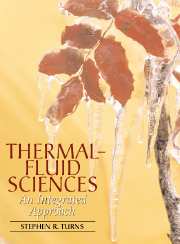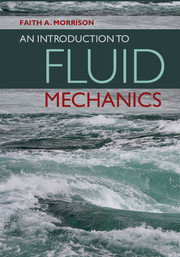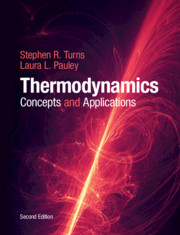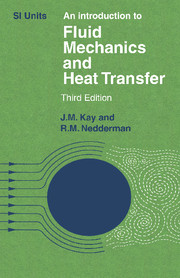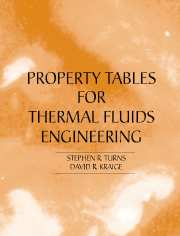Thermal-Fluid Sciences
Thermal-Fluid Sciences is a truly integrated textbook for engineering courses covering thermodynamics, heat transfer and fluid mechanics. This integration is based on: 1. The fundamental conservation principles of mass, energy, and momentum; 2. A hierarchical grouping of related topics; 3. The early introduction and revisiting of practical device examples and applications. As with all great textbooks the focus is on accuracy and accessibility. To enhance the learning experience Thermal-Fluid Sciences features full color illustrations. The robust pedagogy includes: chapter learning objectives, overviews, historical vignettes, numerous examples which follow a consistent problem-solving format enhanced by innovative self tests and color coding to highlight significant equations and advanced topics. Each chapter concludes with a brief summary and a unique checklist of key concepts and definitions. Integrated tutorials show the student how to use modern software including the NIST Database (included on the in-text CD) to obtain thermodynamic and transport properties.
- Integration of the thermal-fluid sciences is achieved by using the fundamental mass, energy, and momentum conservation laws as organizing principles and by using five practical applications - the steam power plant, the jet engine, solar-heated buildings, the spark-ignition engine, and biological systems - as themes throughout
- A problem-solving method is presented in Chapter 1 and all examples follow this method
- Practical applications are stressed throughout and using the NIST-online thermodynamic property database is stressed
Product details
May 2006Mixed media product
9780521850438
1218 pages
288 × 228 × 54 mm
3.26kg
112 b/w illus. 557 colour illus. 61 tables 1836 exercises
Unavailable - out of print January 2015
Table of Contents
- Preface
- Part I. Fundamentals:
- 1. Beginnings
- 2 Thermodynamic properties, property relationships and processes
- 3. Conservation of mass
- 4. Energy and energy transfer
- 5. Conservation of energy
- 6. Conservation of momentum
- 7. Second law of thermodynamics and some of its consequences
- 8. Similitude and dimensionless parameters
- Part II. Beyond the Fundamentals
- 9. External flows: friction, drag and heat transfer
- 10. Internal flows: friction, pressure drop and heat transfer
- 11. Thermal-fluid analysis of steady-flow devices
- 12. Systems for power production, propulsion, heating and cooling
- Appendix A. Timeline
- Appendix B. Thermodynamic properties of ideal gases and carbon
- Appendix C. Thermodynamic and thermo-physical properties of air
- Appendix D. Thermodynamic properties of H20
- Appendix E. Various thermodynamic data
- Appendix F. Thermo-physical properties of selected gases at 1 ATM
- Appendix G. Thermo-physical properties of selected liquids
- Appendix H. Thermo-physical properties of hydrocarbon fuels
- Appendix I. Thermo-physical properties of selected solids
- Appendix J. Radiation properties of selected materials and substances
- Appendix K. Mach number relationships for compressible flow
- Answers to selected problems
- Index.

